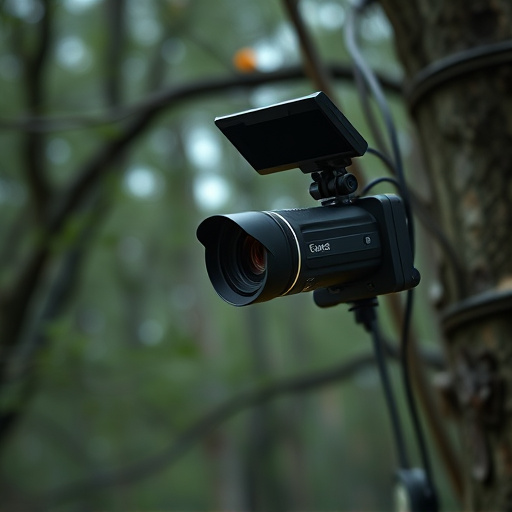Mini spy cameras, tiny yet powerful tools, offer stealthy nighttime recording with advanced LED lighting for high-quality footage. Their compact size and innovative features make them ideal for security, investigations, and home use, overcoming low-light challenges. Privacy protection involves analyzing light patterns, intensities, and movements to detect irregular behavior from these miniature devices.
Uncover the art of identifying hidden threats with our guide to disguised camera detection. In an era where privacy is paramount, understanding mini spy cameras and their unique nighttime recording techniques is essential. This article delves into the world of these covert devices, offering insights on how to recognize them through light analysis. From subtle anomalies in lighting to unexpected flashes, learn to navigate the shadows and stay vigilant against hidden surveillance.
- Understanding Mini Spy Cameras: A Sneak Peek
- Nighttime Recording Techniques Revealed
- Spotting Disguised Cameras: Light Analysis
Understanding Mini Spy Cameras: A Sneak Peek
Mini spy cameras, as the name suggests, are compact and hidden devices designed for covert surveillance. These tiny yet powerful tools have gained popularity due to their ability to capture high-quality footage discreetly. Often no bigger than a coin or a small button, they can be easily integrated into everyday objects like watches, pens, or even light bulbs, making them near-impossible to detect.
With advanced features like nighttime recording and low-light performance, mini spy cameras offer unprecedented accessibility for surveillance purposes. Their small size doesn’t compromise image quality; in fact, many models deliver sharp, clear footage, ensuring users can capture detailed information during their secret missions.
Nighttime Recording Techniques Revealed
In the realm of nighttime recording, advanced techniques and innovative tools have transformed the way we capture unseen moments in low-light conditions. One such game-changer is the use of mini spy cameras designed specifically for stealthy and effective night-time surveillance. These tiny yet powerful devices employ sophisticated lighting strategies to overcome the challenges posed by darkness. By integrating LED lights that mimic ambient illumination, mini spy cameras can blend into their surroundings, ensuring unnoticeable operation even in complete blackness.
This discreet approach allows users to capture high-quality footage without alerting subjects, making it ideal for various applications such as security monitoring, legal investigations, and home safety. Nighttime recording with mini spy cameras has become a popular choice due to its ability to provide clear visuals during the hours when traditional cameras often struggle. The combination of advanced sensors and intelligent lighting ensures that every detail is recorded, revealing a vibrant tapestry of unseen activities in the quiet of night.
Spotting Disguised Cameras: Light Analysis
Spotting hidden surveillance devices, such as mini spy cameras, has become a concern for privacy advocates and security professionals alike. One effective method to detect these disguised cameras is through light analysis during nighttime recording. By examining the patterns, intensities, and movements of lights in an environment, it’s possible to identify irregular behavior that might indicate the presence of covert filming equipment.
During the night, when natural light is minimal, any artificial lighting from cameras can stand out. Mini spy cameras often use LED lights or infrared illumination, which may appear as unusual flickers or static on video footage. Moreover, these devices might employ unique flashing sequences or pulsing lights to communicate with their recordings, creating distinct patterns that can be analyzed and recognized by trained eyes or advanced software algorithms.
Disguised camera identification using light analysis offers a powerful tool in combating covert surveillance. By understanding how mini spy cameras operate, especially during nighttime recording, we can spot these hidden devices more effectively. Through detailed examination of light patterns and unusual lighting arrangements, it becomes possible to detect and dismantle clandestine monitoring efforts, ensuring privacy and security in both public and private spaces. This knowledge is invaluable in today’s digital age, where vigilance against such tiny yet potent technologies is paramount.
